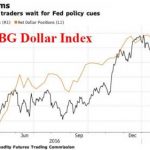For about ten bucks a month, Netflix will give you all the movies you can watch, plus tons of TV show series and other programs, such as one-off science documentaries. They don’t offer all movies, merely more than you can watch. Oh, and there are no commercials.
They don’t just give you old BBC reruns, which you know they can get for a pittance. Netflix is spending money (well Federal Reserve Notes) producing its own original content.
Did we mention that there are no commercials? How is this even possible? According to CNBC, Netflix is spending $8 billion to produce 700 shows. Assuming all of its reported 118 million subscribers pay $10, their production budget eats up more than half a year of their total subscription fee revenue.
CNBC reports that Netflix is exploring the idea of putting ads in its shows. Unfortunately, a quarter of its subscribers say they would leave if that happens. The economics of free vs the economics of losing 25% of your customers in one wrong move. It’s the tiger or the tiger.
Netflix Devalued
In thinking about this, something struck us. Movies and TV shows have been devalued. We have come a long way (down) since the halcyon days of the 1970’s when Keith began watching TV. Back then, shows and movies were rare, and hence special. Today, the value to the marginal consumer is “don’t bother showing it to me, even for free, if there are to be ads.” (CNBC reports most of those who would drop Netflix over ads would not return even if the subscription price dropped.)
The reason is self-evident. There are so many movies, so many movie-like shows (e.g. Game of Thrones, and there is soon to be a series based on J.R.R. Tolkien’s The Silmarillion), that the typical consumer of video has more stuff available than he can hope to watch. And Netflix alone is producing 700 more every year. When Keith was a kid, he recalls many a weekend of “there’s nothing on TV”.
We think of the mechanism behind the law of supply and demand. It is the formation of the bid price and the offer price. The bid price is set by the competition among producers (and the offer comes from the competition among consumers). Producers of any product—in this case movies—take the bid price. Which, according to CNBC is so low, that it has reached zero. Including even ads. You can apparently charge ten bucks a month for access to the video smorgasbord, but the video-food had better be free.
This means that the competition among producers is so intense, that they are dumping so much video product onto the consumer bid, that they have pushed it all the way basically to zero. And they keep dumping more! 700 more just from Netflix alone.









Leave A Comment